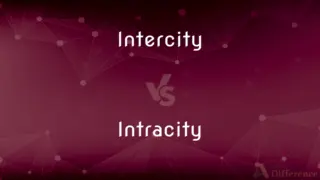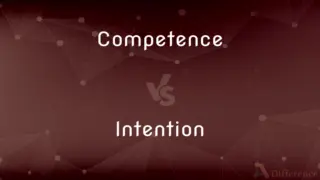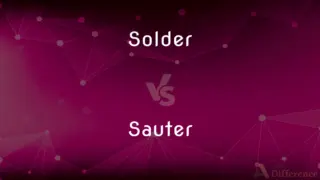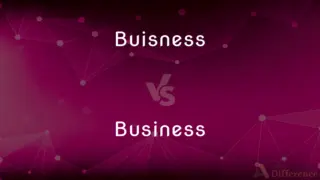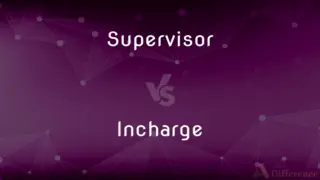Active Voice vs. Passive Voice — What's the Difference?
By Tayyaba Rehman — Published on October 6, 2023
Active Voice occurs when the subject of the sentence performs the action, whereas in Passive Voice, the subject receives the action.
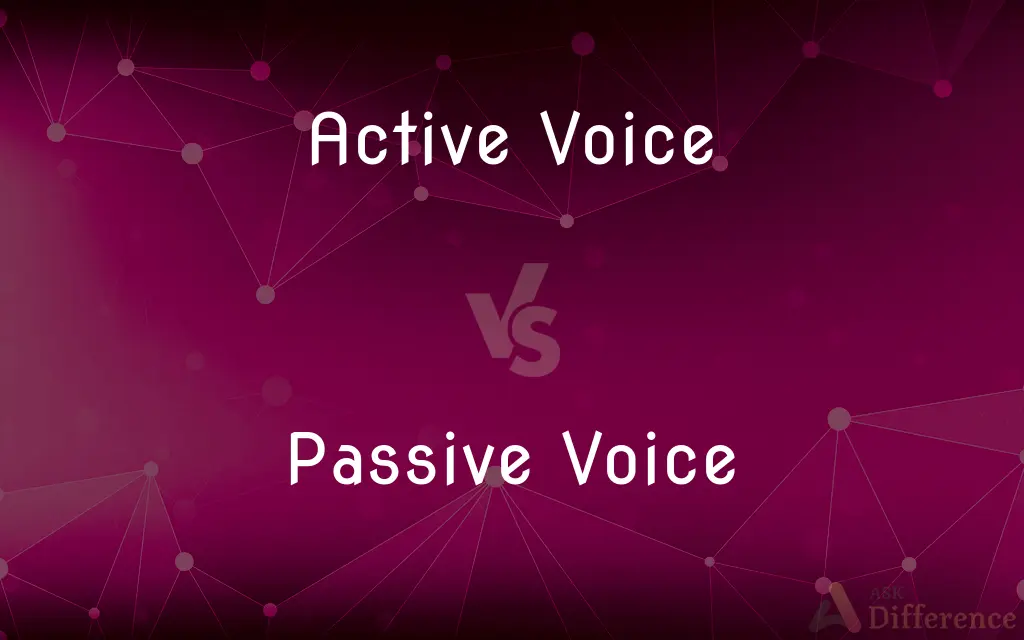
Difference Between Active Voice and Passive Voice
Table of Contents
ADVERTISEMENT
Key Differences
Contrastingly, in Passive Voice, the subject of the sentence receives the action represented by the verb. It often results in sentences that are less direct and more complex, focusing more on the action being done rather than who is doing it. For example, in the sentence "The mouse was caught by the cat," the emphasis is on the action of being caught, with "the mouse" as the receiver of the action.
Tayyaba Rehman
Oct 06, 2023
In English grammar, Active Voice and Passive Voice represent two distinct sentence constructions based on the relationship between the subject and the verb. In Active Voice, the subject of the sentence performs the action denoted by the verb. It results in clear, concise, and direct sentences, emphasizing the doer of the action. For example, in the sentence "The cat caught the mouse," "the cat" is the subject, actively performing the action of catching.
Tayyaba Rehman
Oct 06, 2023
However, Passive Voice has its merits, especially when the doer is unknown, irrelevant, or when the focus needs to be on the action or the recipient of the action. Scientific writing, for example, often employs passive voice to maintain objectivity and focus on the observed phenomena rather than the observer. It's crucial to use passive voice judiciously, balancing it with active constructions to maintain readability and avoid ambiguity.
Tayyaba Rehman
Oct 06, 2023
The utilization of Active Voice and Passive Voice depends largely on the writer's intention and the desired focus of the sentence. Active Voice is generally preferred for its clarity and straightforwardness, making it suitable for most writing types, including journalistic and academic writing. It puts the agent or the doer of the action at the forefront, making the writing more engaging and the sentence structure simpler.
Tayyaba Rehman
Oct 06, 2023
Comparison Chart
ADVERTISEMENT
Sentence Clarity
Generally clearer and more concise
Can be less direct and more complex
Tayyaba Rehman
Oct 06, 2023
Focus
On the doer of the action
On the action or the recipient of the action
Tayyaba Rehman
Oct 06, 2023
Preferred in
Most types of writing for its straightforwardness
When the doer is unknown or irrelevant, or focus is on the action
Tayyaba Rehman
Oct 06, 2023
Sentence Structure
Simpler and more direct
More complex and can be less engaging
Tayyaba Rehman
Oct 06, 2023
Definitions
Active Voice
Active Voice creates direct and engaging sentences, placing the subject before the verb.
John threw the ball demonstrates the use of active voice, with John as the active agent.
Tayyaba Rehman
Oct 01, 2023
ADVERTISEMENT
Passive Voice
Passive Voice is often used when the doer of the action is unknown or irrelevant.
The window was broken, a sentence in passive voice, does not specify who broke the window.
Tayyaba Rehman
Oct 01, 2023
Active Voice
Active Voice emphasizes the doer of the action, making the sentence clear and concise.
She baked the cookies, a sentence in active voice, clearly states the doer and the action.
Tayyaba Rehman
Oct 01, 2023
Passive Voice
Passive Voice is suitable when the focus needs to be on the recipient of the action or the action itself.
In “The results were announced by the committee,” passive voice puts emphasis on the results being announced.
Tayyaba Rehman
Oct 01, 2023
Active Voice
Active Voice is a sentence construction where the subject performs the action.
The dog chased the cat, showcasing active voice.
Tayyaba Rehman
Oct 01, 2023
Passive Voice
Passive Voice occurs when the subject of the sentence receives the action, focusing on the action itself.
The book was read by Mary, exemplifying passive voice.
Tayyaba Rehman
Oct 01, 2023
Active Voice
Active Voice is generally preferred in writing due to its clarity and straightforwardness.
Active voice, as in “The chef cooked the meal,” makes the writing more straightforward and engaging.
Tayyaba Rehman
Oct 01, 2023
Passive Voice
Passive Voice often involves more complex sentence structures, requiring the use of auxiliary verbs.
The cake was eaten by the children, employing passive voice, places emphasis on the cake being eaten.
Tayyaba Rehman
Oct 01, 2023
Active Voice
Active Voice makes the subject the focal point of the sentence, actively performing the verb's action.
The teacher explained the lesson, utilizing active voice to emphasize the teacher's action.
Tayyaba Rehman
Oct 01, 2023
Passive Voice
Passive Voice can make sentences less direct by placing emphasis on the action rather than the doer.
A song was sung by the choir, illustrating the use of passive voice, with the focus on the action.
Tayyaba Rehman
Oct 01, 2023
FAQs
What is Passive Voice?
Passive Voice happens when the subject receives the action, focusing on the action or its receiver.
Tayyaba Rehman
Oct 06, 2023
What is Active Voice?
Active Voice occurs when the subject of the sentence performs the action, emphasizing the doer.
Tayyaba Rehman
Oct 06, 2023
When is Active Voice preferred?
Active Voice is preferred for clarity and conciseness in most writing, emphasizing the subject performing the action.
Tayyaba Rehman
Oct 06, 2023
Author Spotlight
Written by
Tayyaba RehmanTayyaba Rehman is a distinguished writer, currently serving as a primary contributor to askdifference.com. As a researcher in semantics and etymology, Tayyaba's passion for the complexity of languages and their distinctions has found a perfect home on the platform. Tayyaba delves into the intricacies of language, distinguishing between commonly confused words and phrases, thereby providing clarity for readers worldwide.




